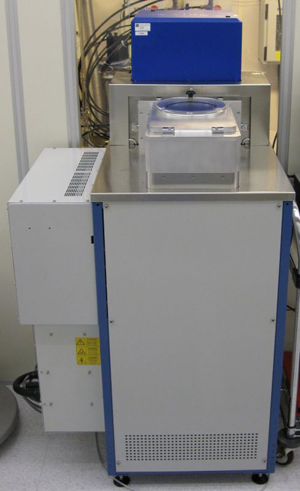
PECVD

Plasma-Enhanced Chemical Vapor Deposition is used to deposit thinfilms at lower temperatures compared to CVD at a pressure around 0.5-2 Torr. The PECVD process chamber consists of two electrodes, a gas inlet and exhaust. The PECVD has two power supplies, one RF source (13.56 MHz) and one LF source (50 – 460 KHz) which can be applied to the top electrode one at a time or simultaniously. Sequential use of the two sources allows for stress control of deposited films. The sample stage (bottom electrode) which is grounded is heated to a maximum temperature of 700°C. Gas molecules from a shower head inlet are ionized by the oscilating electric field and plasma is struck. Electrons are absorbed at the bottom electrode creating a DC voltage of ~10-20V. Ionized gas and radicals react with the substrate and creates a deposition process. Because the reactive and energetic species are a product of collisions in the gas phase the temperature at the substrate is kept at a relatively low value. Thinfilms deposited with PECVD generally have good uniformity, adhesion, step coverage and low pinhole density.
- Materials allowed: Everything which is not considered as contaminating within NanoLab rules, sample size can’t exceed 101.7 mm (4”) in diameter and 5 mm in thickness.
- Process gases: SiH4, NH3, N2O, N2, Ar, CF4, CH4, 10%PH3/Ar and 0.1%B2H6/0.23%H2/Ar
- 13.56 MHz RF source
- 50 – 460 KHz LF source
- Operating remperature: 20°C to 700°C
- Typical applications: SiOx, SiNx, SiOxNy, SiC amorphous Si and MW CNT.
 NTNU NanoLab
NTNU NanoLab UiO MiNaLab
UiO MiNaLab USN MST-Lab
USN MST-Lab SINTEF MiNaLab
SINTEF MiNaLab






